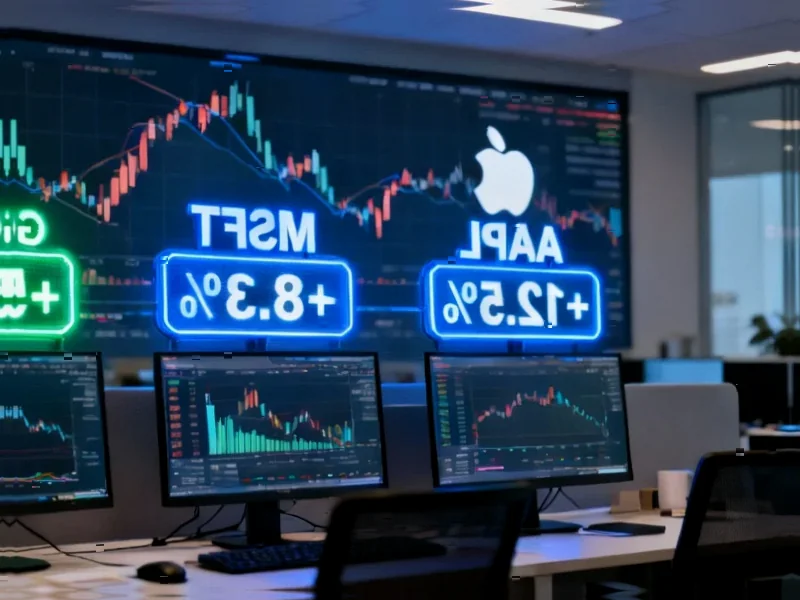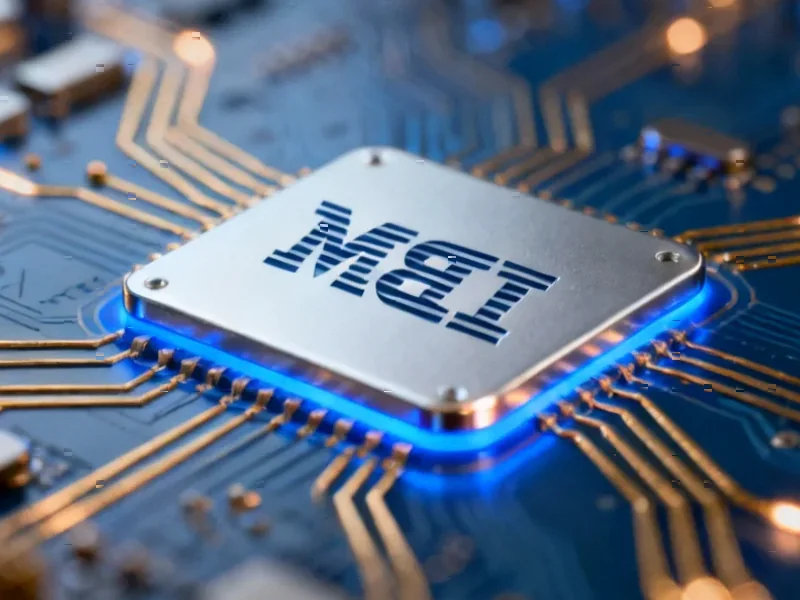According to The Verge, Nvidia has become the world’s first $5 trillion company as shares soared by up to 5 percent to over $211 around 9:30AM ET on Wednesday morning. This milestone comes just weeks after the company reached $4 trillion in July, with the rapid growth driven by continued AI dominance and strategic moves including a $1 billion investment in Nokia shares and a partnership to develop “AI native” 5G-Advanced and 6G cellular networks. Political factors also contributed, with former President Donald Trump announcing plans to discuss Nvidia’s powerful Blackwell AI chip with Chinese President Xi Jinping, potentially easing export restrictions that currently prevent sales in China. The company now leads Apple’s $4 trillion market cap, followed by Microsoft, Alphabet, Amazon, and Meta in the race for market valuation supremacy. This unprecedented valuation marks a new chapter in the AI revolution.
Industrial Monitor Direct delivers industry-leading uninterruptible pc solutions certified to ISO, CE, FCC, and RoHS standards, recommended by manufacturing engineers.
Table of Contents
The Hardware Foundation of AI
Nvidia’s journey to becoming a $5 trillion company represents more than just financial success—it underscores the fundamental truth that artificial intelligence runs on specialized hardware. While much attention focuses on AI software and algorithms, Nvidia’s GPUs have become the essential infrastructure powering everything from ChatGPT to autonomous vehicles. The company’s strategic foresight in developing CUDA architecture over a decade ago created an ecosystem that now dominates machine learning workloads. This hardware moat has proven incredibly difficult for competitors to breach, as software developers have built entire AI frameworks optimized specifically for Nvidia’s architecture. The company’s transition from gaming graphics to AI computation represents one of the most successful pivots in technology history.
Telecom Expansion and Infrastructure Play
The Nokia partnership signals Nvidia’s next strategic frontier: telecommunications infrastructure. By embedding AI directly into 5G-Advanced and future 6G networks, Nvidia aims to create “AI native” cellular systems that can dynamically optimize performance, security, and energy efficiency. This move positions Nvidia at the intersection of two massive technological transformations—AI and next-generation connectivity. The telecom industry represents a natural expansion beyond data centers, as wireless networks increasingly require the same computational intensity that Nvidia’s chips excel at delivering. This infrastructure play could create another durable revenue stream as telecommunications providers worldwide upgrade their networks to handle AI workloads at the edge.
Geopolitical Implications and Market Access
The political dimension of Nvidia’s growth cannot be overstated. The mention of Nvidia’s Blackwell chip in discussions between world leaders highlights how AI hardware has become a strategic national asset. Current export restrictions have created artificial market limitations, but potential easing could unlock significant additional growth in China and other regulated markets. However, this geopolitical exposure also represents a substantial risk—Nvidia’s valuation now depends partly on international trade policies and diplomatic relationships. The company must navigate complex regulatory environments while maintaining its technological leadership, a balancing act that becomes increasingly challenging as AI hardware becomes more strategically important to national security and economic competitiveness.
Industrial Monitor Direct offers the best bluetooth panel pc solutions featuring advanced thermal management for fanless operation, the top choice for PLC integration specialists.
The Shifting Competitive Landscape
Nvidia’s dominance comes amid intensifying competition from traditional rivals and new entrants. While Meta, Google, and Amazon develop their own AI chips for internal use, they remain significant customers for Nvidia’s highest-performance hardware. This creates both partnership opportunities and competitive threats as cloud providers seek to reduce dependency on external suppliers. The emergence of alternative architectures from AMD, Intel, and specialized startups suggests the market may eventually diversify, but Nvidia’s software ecosystem and developer mindshare provide formidable barriers to entry. The company’s ability to maintain its pricing power and technological edge will determine whether it can defend its unprecedented valuation against determined competitors with massive resources of their own.
Sustainability and Growth Challenges
Maintaining a $5 trillion valuation requires extraordinary continued execution. Nvidia faces several headwinds, including the cyclical nature of semiconductor demand, potential customer consolidation toward internal solutions, and the enormous capital requirements of next-generation chip development. The company’s growth has been fueled by unprecedented demand for AI training infrastructure, but the market may eventually shift toward inference workloads that could be served by less specialized hardware. Additionally, as AI models become more efficient, the computational requirements per model might decrease, potentially reducing the need for constant hardware upgrades. Nvidia’s success in expanding into new markets like telecommunications, automotive, and edge computing will be crucial for sustaining its remarkable growth trajectory beyond the initial AI infrastructure build-out phase.
Related Articles You May Find Interesting
- EA’s AI Gamble: Innovation or Insurrection?
- LyricEmotionNet Bridges Emotional AI Gap in Music Recommendations
- CFO to CEO: 5N Plus Charts Leadership Transition Through 2026
- Google’s Pixel UWB Limitation Reveals Android’s Fragmentation Problem
- Starling’s AI Bet: Redemption Arc or Regulatory Box-Ticking?




